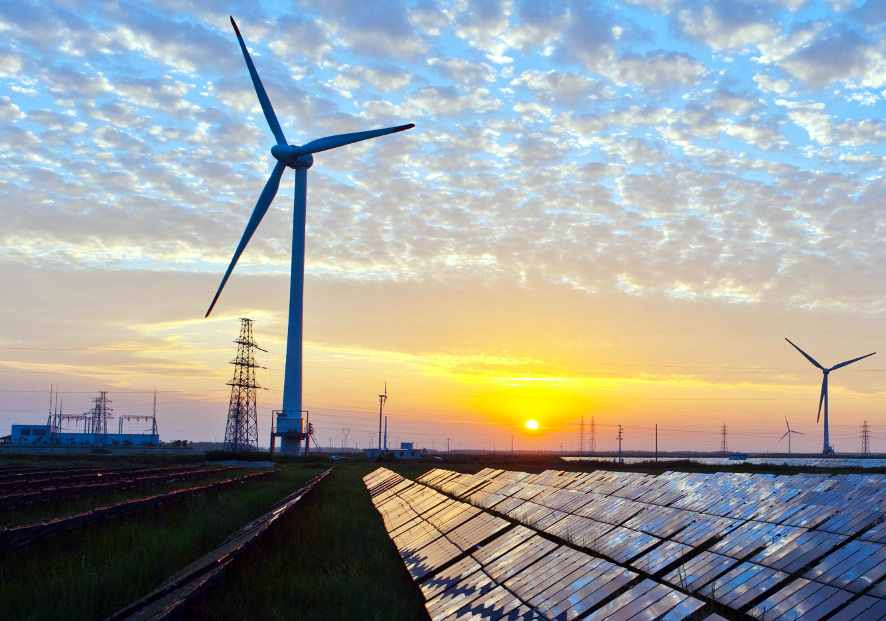Battery storage, green hydrogen, and flexible coal-fired power generation can help India address its next big challenge of integrating large-scale variable renewable energy into the electricity grid over the next decade, according to a new report by the Institute for Energy Economics and Financial Analysis (Ieefa).
The report notes the Central Electricity Authority’s projection that solar and wind will form 51% of India’s total installed capacity, or 420 GW, by 2030, with biomass and small hydro adding another 30 GW. The International Energy Agency’s India Energy Outlook 2021 projects India to add 900 GW of renewable capacity by 2040.
“The transition to low-cost, variable renewable energy generation requires a flexible grid that can respond rapidly to changes in power demand dynamics,” said Kashish Shah, an Ieefa research analyst and author of the report, recommending a three-pronged approach for grid firming.
The report calls for policy support for a time-of-day pricing mechanism to incentivize capital investment in grid-firming solutions such as battery storage, hydrogen, and flexible coal power generation to ensure flexible, reliable peak-time power supply.
The report also looks at the experiences of leaders in integrating large-scale renewables, such as Germany and the states of South Australia and California, in the context of the Indian electricity market.
“While the much-bigger Indian market benefits from its strongly connected national electricity grid, it has its own set of challenges and market structure dynamics in dealing with large-scale variable renewable energy,” says Shah. “But there are interesting lessons for India as renewable energy-rich states such as Rajasthan, Gujarat, Maharashtra, Karnataka, and Tamil Nadu could see their shares of renewable generation increase to 50% by 2030 from the current levels of 10-30%,” said Shah.
Battery storage
Ieefa says domestic and international developers and utilities are eyeing the very positive battery cost deflation trend but need to see a market signal in the form of time-of-day pricing to attract high initial capital investment into such assets.
“Battery storage can provide a solution to help the grid manage massive amounts of intermittent wind and solar, provide dispatchable power during peak demand periods, and other essential grid services. And battery cost deflation is now making utility-scale battery storage projects possible for India,” said Shah.
According to The International Energy Agency, India could add 140-200 GW of battery capacity by 2040 – the largest of any country and more than 100 times as much as currently installed in the U.S. today.
“Battery storage will likely play an important role in India achieving its renewable energy capacity target of 450 GW by 2030. India already has 93 GW of on-grid variable renewable energy and is targeting annual additions of 20-40 GW,” said Shah.
Flexible coal-plant operation
Solar power is now the cheapest source of new Indian electricity capacity, and with record low tariffs of INR 1.99-2/kWh (around US$27/MWh) it’s now below the marginal fuel cost of coal-fired power plants.
However, the report says coal is likely to remain an important source of Indian electricity generation for some time to come and proposes flexing its generation to cater to the majority of grid variability requirements.
“Flexible generation is characterized by the ability to rapidly ramp up and ramp down the generation, quickly start up and shut down and operate efficiently at lower generation levels,” said Shah.
“Flexible coal-fired plants would require retrofitting, operational and regulatory amendments. This would incur capital costs as well as additional operational expenditure depending upon the size, age, and combustion technology of the plant, but this could be rewarded with a higher time-of-day price.”
Green hydrogen
Though yet to be commercially deployed in India, green hydrogen, produced through water electrolysis using renewable energy, has a wide range of potential applications in transport, industrial production of ammonia, methanol, steel and electricity storage, and is an opportunity that India cannot afford to miss, said Shah.
According to The Energy and Resources Institute’s (TERI) recent analysis, the cost of alkaline electrolyzers is projected to drop 56% from around INR 6.3 crore/MW (US$0.86 million/MW) today to around INR 2.8 crore/MW (US$0.38 million/MW) by 2030.
“Billions of dollars of capital commitments across the globe are building a critical mass in the green hydrogen space. So India will have the benefit of leveraging these learning-by-doing pilots that are underway in developed economies,” said Shah.
“India’s strategy should be to plan in advance and be prepared to ride the energy storage wave when it arrives.”
This content is protected by copyright and may not be reused. If you want to cooperate with us and would like to reuse some of our content, please contact: editors@pv-magazine.com.









When will these “small time” players learn the game played in FULL SIZE Stadiums…. as they waddle in their backyard puddles, they are unable to understand that India has 20% of the World’s Population and at 50% of the AVERAGE Energy Consumption by 2050 they would require a 15TW System and 20-25% of this for Sunset-to-Sunrise needs to support Zero Pollution by 2050.
Alternatively, India can be left to the mercy of these “small time” players… as the world moves ahead.. way way ahead as they eliminate Pollution and India continues on its killing spree of 2.5 Million Annually today and 35 Million DALY…. GOD BLESS INDIA…. AND THE PEOPLE OF INDIA in the future….